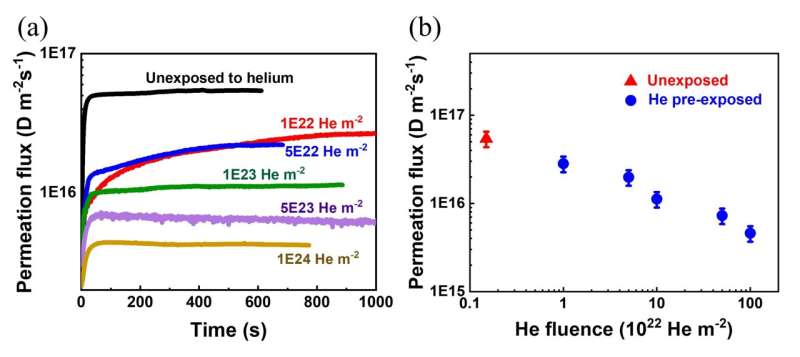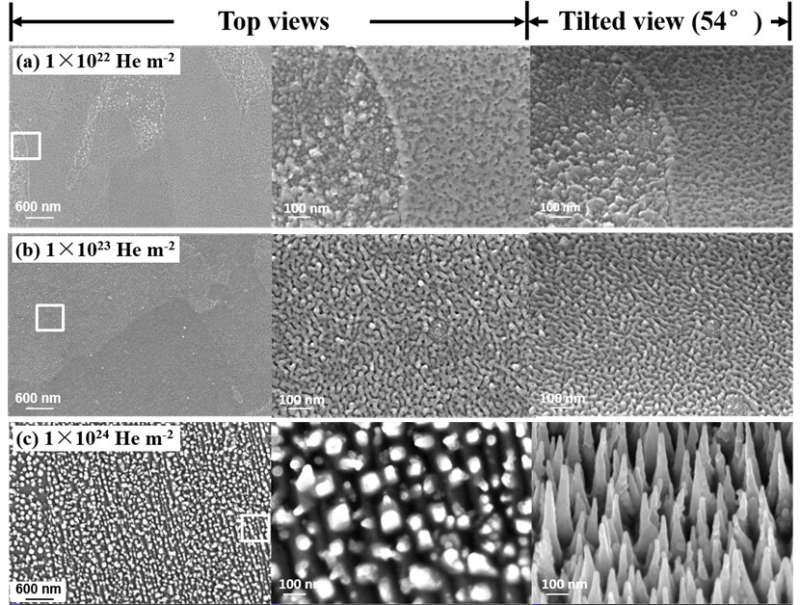Figure 1. (a) transient penetration curves and (b) steady-state penetration. Credit: Wang Lu
A research team from the Hefei Institutes of Physical Science (HFIPS) of the Chinese Academy of Sciences (CAS) has recently revealed that helium exposure could inhibit the penetration of hydrogen isotopes in wall materials. Their results were published in Nuclear Fusion.
Under the interaction between the boundary plasma of the fusion reactor and the material, deuterium and tritium will penetrate the first wall and enter the coolant inside, increasing the fuel cost and safety risk of the fusion reactor. At the same time, the helium particles produced by the deuterium-tritium fusion reaction will also directly bombard the surface of the material, affecting the permeation and retention behavior of deuterium-tritium in the material.
In this study, scientists focused on the effect of helium plasma exposure on candidate wall materials and the structural materials of fusion reactors and explored the mechanism of helium exposure to inhibit the penetration of hydrogen isotopes in wall materials.
According to the researchers, low-energy helium plasmas pre-exposure induced the formation of protruding nanostructures on the surface of the material. The deuterium plasma-driven permeation flux decreased gradually with the increase of helium pre-exposure fluence.
Combining the results with theoretical calculations, they concluded that the surface topography evolution and the near-surface helium bubble layer had a double reduction effect on the hydrogen isotope penetration through the material—the surface protruding structure increased the reflected flux of incident ions and reduced the implantation flux. Moreover, the near-surface helium bubbles reduced the transport channels for the inward diffusion of hydrogen isotope atoms and further reduced the steady-state permeation flux of hydrogen isotopes.
Based on previous studies on hydrogen isotope permeation of wall materials and structural materials, this study realizes quantitative analysis of effect of helium exposure fluence, which can provide support for evaluation of tritium permeation in the first wall of fusion reactors.
Surface morphologies of samples with different He plasma exposure fluence. Credit: Wang Lu
More information: Lu Wang et al, The effect of He-induced surface microstructure on D plasma-driven permeation through RAFM steel, Nuclear Fusion (2022). DOI: 10.1088/1741-4326/ac62f8
Provided by Chinese Academy of Sciences

























